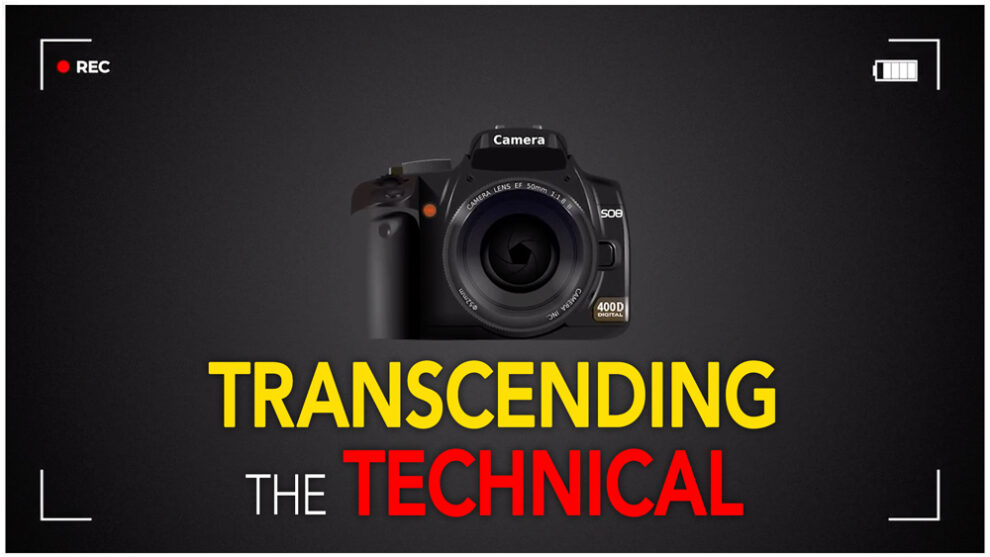One of the first things that comes to mind when beginner and intermediate photographers think about how to create perfect photographs is a
And then there is the gear. Creating the perfect photograph naturally leads to thoughts of the tools we’ll need. Good camera bodies, sharp lenses, external lighting and so on.
While it’s true that all of these things are needed to produce a good photograph, but technical skill and gear — these things can only take us part of the way there. It is possible to produce technically perfect photographs that somehow, despite their lack of errors, just seem lackluster.
When that happens, it usually means that there’s a vital component missing from the creation of the photograph. And that vital component is usually some spark of intuition or some insight that captures the attention of your audience, pulls them into the image, and gives them something to think about as they view it. No matter how much technical skill a photographer possesses, and no matter how technologically advanced the gear is, these things just aren’t enough to add a sense of life or meaning to an image.
Rather, this is something that typically takes a lot of thought. Sometimes, when you find yourself struggling to distill meaning from an image, it can help to ask a few questions to your creative process along. To that end, here are a few of these questions. Try them, and you may find that one or more of them help you discover how to add that little extra something to your images.
What is the Tone or Mood I Need to Create in This Photograph?
Tone and mood are incredibly important in photographs. The same landscape can look entirely different depending on the type of mood you’re going for — and that has a huge impact on the meaning or message that you are trying to communicate for viewers. So, as you are creating photographs, think about this question carefully, and then make adjustments as needed to reflect the tone you want to set.
To use a landscape as an example, if you want a bleak mood, then wait for a stormy day to take the picture. Or to set a reminiscent tone, take the photograph during the golden hours right before sunset. Wait till the spring bloom if you want a happy, vital mood. For every image, there are all kinds of factors, even beyond lighting, that you can play with to alter the mood.
How is Each Element Essential to the Image?
Elements are another thing that need to be considered carefully. When there are too many, and when those elements don’t contribute to the overall message behind the photograph, they can overwhelm the viewer. As you are planning all of the things that need to be within the frame, pause to consider each carefully. If you find there isn’t a strong reason to include a particular element—like tree branches, a person or some other thing — then you’ll want to work out a way to create the composition without it.
Will You Include a Conflict or a Universal Truth?
One way to make photographs relatable to a broad audience is to select themes and truths that resonate widely among people. So, for instance, conflict doesn’t necessarily mean photographing a confrontation of some kind, but rather, depicting something that most of us struggle with. A person with a sad expression gazing into a mirror shows a kind of conflict in that the person perhaps struggles with negative thoughts about his or her looks. A photograph on a fallen tree that has happened to damage a home, a car, or some other piece of property illustrates the conflict between man and nature. These are all things that most of us struggle with, and photographs of these things tend to be very relatable.
The same goes for universal truths. Photographs that show the way generosity improves lives, that show the love between a parent and child, images that depict the devotion of an artisan who is passionate about the product he produces — these are examples of truth that most of us have either witnessed or experienced directly. Thus, photographs that include such things tend to have a higher emotional value among viewers.
How Does the Image Change Viewers’ Minds?
This is another good question to ask yourself as you are creating. And it’s not necessarily that you need to change viewpoints or that you need to get a message across so strongly that you change a viewer’s opinion about a particular issue. Rather, in this instance, changing viewers’ minds is more about leaving them with something a little more than they had before. A new insight into a rarely-seen facet of life, perhaps, or a little more information on a particular topic than they possessed before seeing your photographs. It’s tough to work these kinds of things into photographs, and depending on your subject material, it may not always be necessary. However, those rare times that you can leave viewers with a different take on something, or a little more insight than they had before—those are the photographs that really make an impression. Not every photograph can answer all of these questions, but if you can form a solid answer to at least one of them within an image, you’ll be able to produce a piece of art that communicates something. And, in the end, that’s what photography is all about — transmitting a meaning or message from your mind to the minds of the people who look at your photographs. Technical skill and gear will get you part of the way there, but ultimately, the real resonance comes from an accurate portrayal of something beyond superficial imagery.





